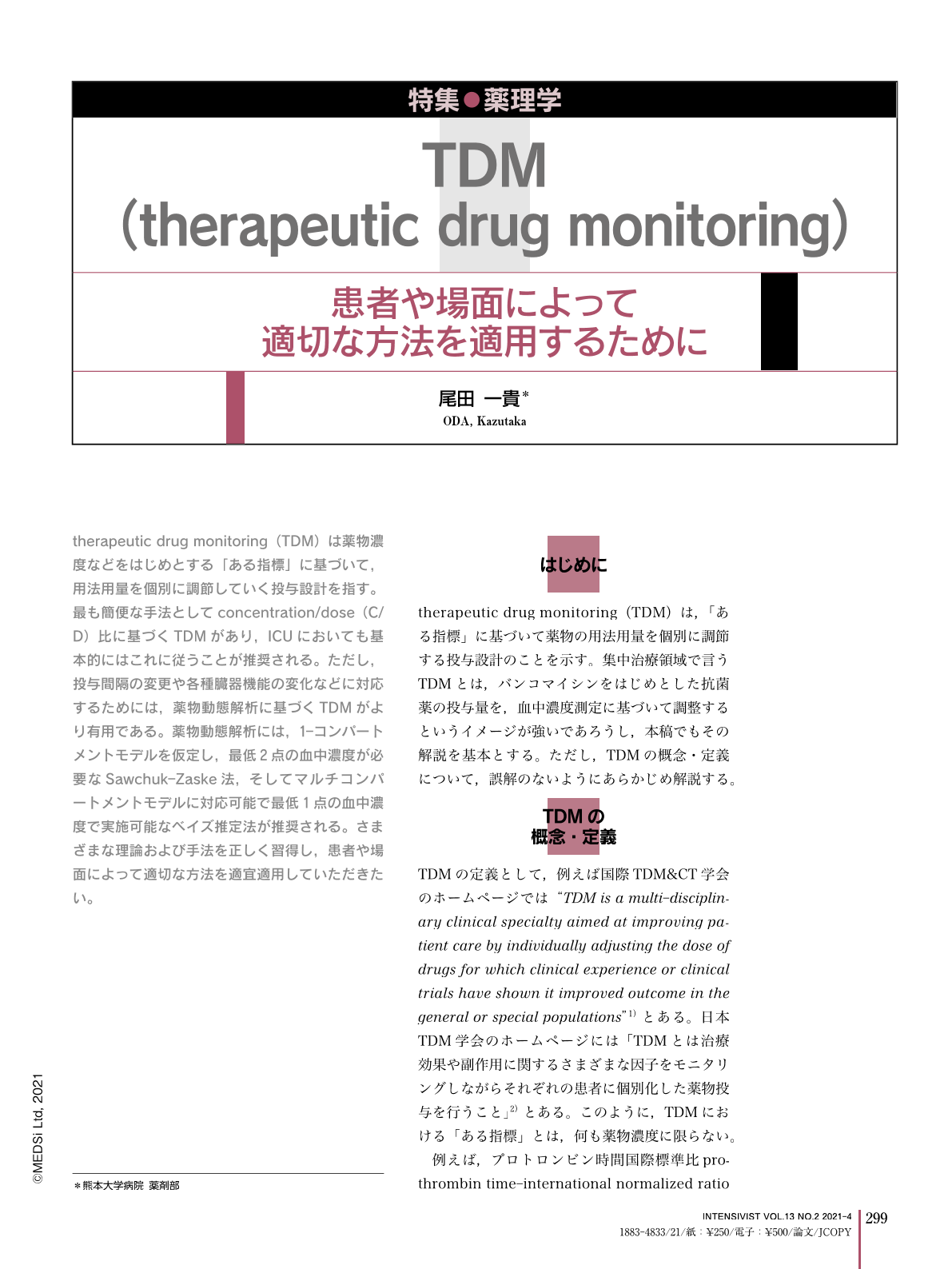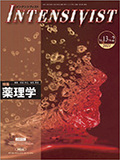Japanese
English
- 有料閲覧
- Abstract 文献概要
- 1ページ目 Look Inside
- 参考文献 Reference
therapeutic drug monitoring(TDM)は薬物濃度などをはじめとする「ある指標」に基づいて,用法用量を個別に調節していく投与設計を指す。最も簡便な手法としてconcentration/dose(C/D)比に基づくTDMがあり,ICUにおいても基本的にはこれに従うことが推奨される。ただし,投与間隔の変更や各種臓器機能の変化などに対応するためには,薬物動態解析に基づくTDMがより有用である。薬物動態解析には,1-コンパートメントモデルを仮定し,最低2点の血中濃度が必要なSawchuk-Zaske法,そしてマルチコンパートメントモデルに対応可能で最低1点の血中濃度で実施可能なベイズ推定法が推奨される。さまざまな理論および手法を正しく習得し,患者や場面によって適切な方法を適宜適用していただきたい。
Therapeutic drug monitoring (TDM) is a dose individualization strategy based on an index such as drug concentration. The simplest strategy is referred to as the concentration/dose (C/D) ratio, which is recommended even in the intensive care unit. However, pharmacokinetic analysis-guided TDM is useful for adjustment of dose intervals or alterations of organ function. The Sawchuk-Zaske method (assuming a 1-compartment model requiring two-point concentrations), or Bayesian method (requiring one point concentration at least, even for multi-compartment models) are recommended. The author hopes that intensivists can learn theories and strategies for TDM, then apply the most appropriate one to each patient individually.

Copyright © 2021, MEDICAL SCIENCES INTERNATIONAL, LTD. All rights reserved.


